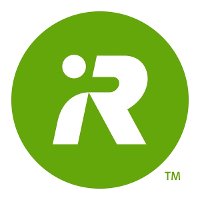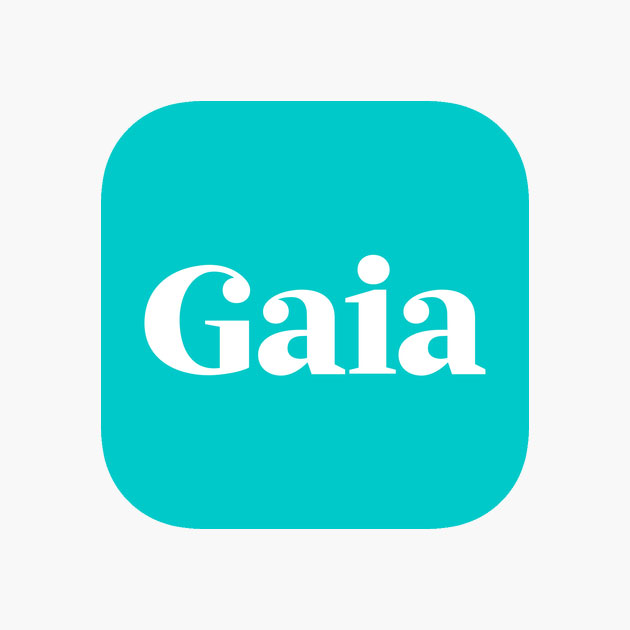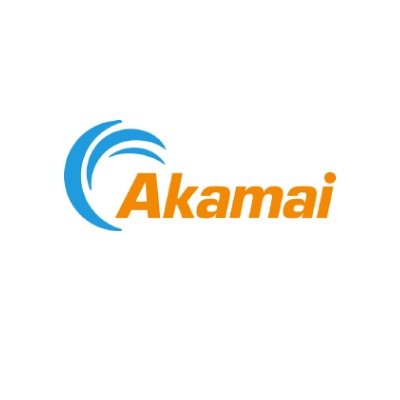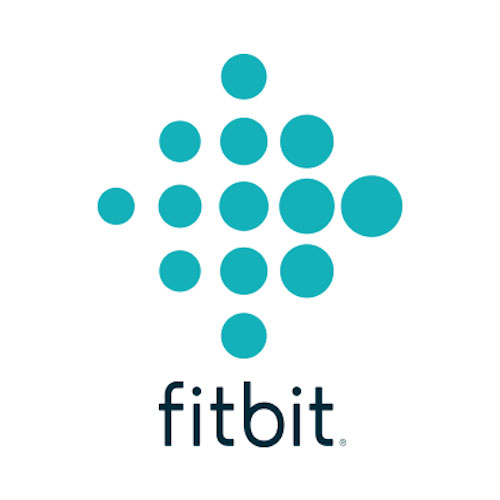BLOG
EverQuote: Rethinking the Insurance Industry
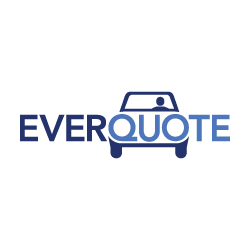 Founded in 2011 by former M.I.T. classmates Seth Birnbaum and Tomas Revesz, and headquartered in Cambridge, Massachusetts, EverQuote is a leading online insurance marketplace. EverQuote’s goal is to revolutionize the insurance shopping experience for consumers and modernize the way insurance providers reach customers. In doing so, the company intends to become the largest online store for insurance policies in the U.S.
Founded in 2011 by former M.I.T. classmates Seth Birnbaum and Tomas Revesz, and headquartered in Cambridge, Massachusetts, EverQuote is a leading online insurance marketplace. EverQuote’s goal is to revolutionize the insurance shopping experience for consumers and modernize the way insurance providers reach customers. In doing so, the company intends to become the largest online store for insurance policies in the U.S.
Without any acquisitions, EverQuote has blossomed quickly, with a compound annual revenue growth rate of 32 percent over the last five years. Revenue has risen from $126 million in revenue in 2017, to $163 million in 2018, to $249 million last year. Unlike many VC-backed companies that have required multiple rounds of financing in the face of mounting losses, EverQuote was largely bootstrapped, with just $10 million of equity capital raised to fund the business before its IPO in June of 2018. In Q3 of 2019, the company generated its first non-GAAP operating profit, and has demonstrated consistent profitability in each of the last four quarters, with cash on the balance sheet rising steadily from $37 million at the end of Q2 last year, to $54 million this year.
Automotive insurance, EverQuote’s first addressable market, remains its largest, comprising over 80 percent of revenue. EverQuote’s online platform is facilitated by proprietary data and technology, which matches consumers with insurance options offered by carriers and independent agents tailored to their specific criteria. The criteria may include desired demographics, driving history, and the prospective policy holder’s driving track record.
EverQuote has invested heavily in data science, including machine learning, as well online advertising to efficiently match buyers and sellers of insurance policies. The company’s data assets include over two billion consumer-submitted data points that have come from 65 million quote requests, and 178 billion ad impressions, which have been acquired through its more than $650 million in advertising spending since inception. Over time, the company intends to fully automate the bidding process across most of its traffic sources, and is also working to achieve deeper integration with its insurance partners.
EverQuote boasts an expansive network of more than 100 insurance carriers, including the twenty largest property and casualty carriers in the United States, as defined by premium volume. In addition, the company partners with more than 8,000 insurance agencies. EverQuote’s leading partners include Progressive Casualty Insurance Company (which accounted for roughly 20 percent of revenue in 2018 and 2019) as well as StateFarm, Farmers, Esurance, Liberty Mutual, and Nationwide.
EverQuote gives consumers a single point of reference for insurance shopping. While EverQuote’s service is free for consumers, the company generates revenue through the sale of consumer referrals to insurance providers. According to EverQuote’s 2019 consumer survey, customers reported an average annual premium savings of $610 for insurance policies purchased through its marketplace.
EvreQuote has created a self-sustaining business model, having achieved EBITDA profitability and free cash flow generation in each of the last four quarters, although its progress is not reflected in the Street Consensus, which measures GAAP profitability. As an “asset light” business, like Google and Facebook, EverQuote generates more than $1 million in revenue per employee, and over half of its 300 employees are analysts, data scientists, and engineers. The company’s balance sheet is solid, even after the recent Crosspointe acquisition, as it will likely have more than $40 million in cash and no debt at the end of the current quarter.
IPG Photonics: Shining a Light on Factory Automation
 With trailing twelve month revenue of $1.25 billion, and a recent market cap of $8.7 billion, IPG Photonics (NASDAQ: IPGP), based in Oxford, Massachusetts, is a leading developer of fiber lasers, fiber amplifiers, and diode lasers. The company’s products are utilized primarily in the automotive, industrial machinery, consumer product, and medical industries.
With trailing twelve month revenue of $1.25 billion, and a recent market cap of $8.7 billion, IPG Photonics (NASDAQ: IPGP), based in Oxford, Massachusetts, is a leading developer of fiber lasers, fiber amplifiers, and diode lasers. The company’s products are utilized primarily in the automotive, industrial machinery, consumer product, and medical industries.
IPG Photonics was founded in Russia in 1990 by then 52 year-old physicist Dr. Valentin P. Gapontsev, Ph.D. Born at the outset of World War II, Dr. Gapontsev earned his Ph.D. in laser material science from the Moscow Institute of Physics & Technology in 1972. In addition to his numerous awards in science and technology, the Russian-born Gapontsev is known as one of the fathers of fiber lasers, stemming from his original work in laser material science. Today, the 81 year-old founder remains IPG’s Chairman and CEO, and through direct and indirect share ownership, controls the overwhelming majority of the company’s common stock. Originally, IPG produced custom glass and crystal lasers, wireless temperature meters, and laser components. The company subsequently shifted focus to high-power fiber lasers and amplifiers in 1992.
IPG debuted on the NASDAQ on December 13th, 2006 in a 10.4 million common stock offering, with 7.6 million coming from the company, and 2.8 million from shareholders. Merrill Lynch and Lehman Brothers were joint book-running managers for the offering, assisted by Needham & Company, Thomas Weisel Partners, and Jeffries.
IPG pursues a strategy of vertical integration, purchasing only the raw material inputs utilized for its products. Thus, it designs and manufactures nearly every key component used in its finished products, ranging from semiconductor diodes to optical fiber preforms, to finished fiber lasers, and amplifiers. The company also creates complementary products utilized with its lasers, such as optical delivery cables, fiber couplers, beam switches, optical processing heads, and chillers. Vertical integration enables the company to reduce manufacturing costs, improve quality control, as well as ensure product integration, and the protection of its intellectual property. IPG has also accumulated over 350 patents, with more than 80 more pending.
Automotive, broadly defined, is IPG’s largest vertical market, contributing roughly 20 percent of revenue. The company’s lasers are utilized for a variety of cutting and welding applications, including body welding across all types of production vehicles. In Q1 of this year, IPG received its first large order for Adjustable Mode Beam (ABM) lasers, which are utilized for electric vehicle battery welding. The new ABM lasers allow for “spatterless” welding, greater reliability, and higher wall plug efficiency. Another key application for electric vehicle batteries come from IPG’s pulsed laser, which is utilized for foil cutting.
With its cutting edge, unique proprietary technology, focus on vertical integration, and global reach, IPG is helping to illuminate the way to automated industrial production.
Care.com to be Acquired by IAC/Interactive
 IAC/Interactive (NYSE: IAC), the large internet and media conglomerate with a market cap of $21 billion, annual sales of roughly $4.8 billion, $3.4 billion in cash, and $3.1 billion in total debt, announced its intention on Friday, December 20th to acquire Care.com for $15 per share in an all cash deal. The valuation is, according to IAC, a 34 percent premium to Care.com’s closing share price on October 25, 2019, the last trading day before a press account indicated that a deal might be in the offing.
IAC/Interactive (NYSE: IAC), the large internet and media conglomerate with a market cap of $21 billion, annual sales of roughly $4.8 billion, $3.4 billion in cash, and $3.1 billion in total debt, announced its intention on Friday, December 20th to acquire Care.com for $15 per share in an all cash deal. The valuation is, according to IAC, a 34 percent premium to Care.com’s closing share price on October 25, 2019, the last trading day before a press account indicated that a deal might be in the offing.
With a history of acquiring somewhat distressed internet companies with solid brands and customer sets, IAC’s acquisition of Care.com is consistent with several of its previous purchases, including Ask Jeeves, and Angie’s List, which following its merger with HomeAdvsior is now called ANGI Home Services (NASDAQ: ANGI). Our understanding is that IAC will roll Care.com (previously) into the IAC/Interactive umbrella. As part of the deal, IAC has already assigned a new CEO to run Care.com. It would not be unreasonable to assume that pending changes to its management and operational structure, that IAC would either establish a tracking stock, or spin-off Care.com in the future, perhaps under a new name, or with additional businesses currently owned by IAC, or ones yet to be acquired.
Undeniably, it has been a challenging year for Care.com. Back in March of 2019, The Wall Street Journal published a damaging expose which criticized Care.com’s screening processes, and found hundreds of instances in which daycare centers listed on its website were not properly vetted. The WSJ expose prompted Care.com to immediately remove flawed agency listings as well as unveil new security and background checks to be paid by the company.
The June resignation of the company’s CFO, who remained in a transition role through August 31, the early August announcement that founder, Chairwoman, and CEO, Sheila Marcelo would transition to a new role as executive chairwoman, along with a reduction in revenue and earnings guidance, all contributed to a 70 percent contraction in its share price. In our opinion, the damage inflicted on Care.com’s brand is by no means permanent, though the cost to ensure consumer satisfaction with the level of background checking on caregivers remains in flux. An additional question mark has been the cost of assigning Care.com employees to fulfill caregiving roles for the corporations and universities utilizing its last minute backup care services.
Getting Care.com’s board to agree on a take-over bid may have been easier than hiring a brand new executive management team, which would have much work to do behind the scenes to re-establish a profitable, predictable growth trajectory. A new team would also be required to make decisions publicly, rather than behind the aegis of a large conglomerate, such as IAC/Interactive. We have no reason not to believe that all reasonable strategic buyers were consulted during the company’s sale process, so it is unlikely—though not impossible—that another suitor would enter the fray to make a higher bid Care.com.
Akamai Technologies: Zeroing in on Zero Trust
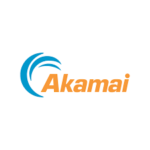 Through internal development and acquisitions, cloud security has grown rapidly to become an $800 million annual run rate business for Cambridge, MA-based Akamai Technologies (NASDAQ: AKAM). The business is on track to generate nearly 30 percent of sales this year, up from 16 percent of sales for all of 2016. Through its early work with Kona Site Defender, which protects websites, web applications, and APIs against cyberattacks, Akamai developed a core competence in protecting against Distributed Denial of Service (DDoS) attacks against data center software assets. Such attacks involve the high-jacking of a large number of computer servers to overwhelm a target website or data center with malicious traffic.
Through internal development and acquisitions, cloud security has grown rapidly to become an $800 million annual run rate business for Cambridge, MA-based Akamai Technologies (NASDAQ: AKAM). The business is on track to generate nearly 30 percent of sales this year, up from 16 percent of sales for all of 2016. Through its early work with Kona Site Defender, which protects websites, web applications, and APIs against cyberattacks, Akamai developed a core competence in protecting against Distributed Denial of Service (DDoS) attacks against data center software assets. Such attacks involve the high-jacking of a large number of computer servers to overwhelm a target website or data center with malicious traffic.
With users, applications and devices moving outside the traditional perimeter of corporate firewalls, new approaches are required to ensure against the infection or theft of corporate data assets. To address this growing problem, Akamai has been developing a new cloud security architecture which it calls Zero Trust. The underlying principle behind zero trust is akin to that promulgated by former US president Ronald Reagan, who described the necessity to “trust, yet verify” any agreement that might be reached with the Soviet Union. In the same way that treaties must be verified, so must the identities of those who present a higher risk to data access, including contractors and employees in remote geographies. In such instances, corporations will wish to only grant precise access to what is needed, rather than broad access to a corporate network.
A key element of Akamai’s approach is centered around technology acquired last year from Janrain, which helps Akamai to decipher login history and access patterns, such as the city and time of day when such logins occur. With technology provided by Janrain, Akamai now helps customers in the area of identity proofing, authentication without using passwords, access control, web fraud prevention, and advertising fraud.
Last week, Akamai announced the tuck-in acquisition of KryptCo, a Cambridge, MA startup, whose engineers have developed mobile-based technology for multi-factor user authentication, which will fit into Akamai’s Enterprise Access Control Framework. Authenticating and assigning users the correct level of access to a data network remains a key technical challenge, as many approaches to access control are vulnerable to phishing attacks, in which user data, including alphanumeric login credentials, are targeted. Kryptco has developed a new approach, which does not require a pin number for authorization.
By next year, cloud security could contribute in excess of $1 billion in revenue and comprise about 34 percent of sales, which would be twice the percentage of revenue contributed just three years ago. The challenges posed by corporate data theft and espionage are likely to keep the category of zero trust in focus for many corporations and government entities for many years to come.
iRobot: Rethinking Lawn Care
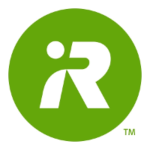 iRobot has thus far had its greatest success inside the home, as the Roomba and Braava for vacuum cleaning and floor mopping, respectively, account for virtually all of its revenue, and the lion’s share of the more than 20 million consumer robots it has sold since inception. For many years, however, iRobot has explored the opportunity to automate the mundane tasks of outdoor home maintenance. iRobot’s Looj, a $299 robot that cleaned gutters, was an early experiment that had a core following, but has since been discontinued as its market opportunity was ultimately limited in size.
iRobot has thus far had its greatest success inside the home, as the Roomba and Braava for vacuum cleaning and floor mopping, respectively, account for virtually all of its revenue, and the lion’s share of the more than 20 million consumer robots it has sold since inception. For many years, however, iRobot has explored the opportunity to automate the mundane tasks of outdoor home maintenance. iRobot’s Looj, a $299 robot that cleaned gutters, was an early experiment that had a core following, but has since been discontinued as its market opportunity was ultimately limited in size.
It may come as a surprise to some that the largest outdoor consumer robot category is lawn mowing. Robotic Lawn Mowers (RLMs) have been established for many years in Europe, where the category has seen its largest number of early adopters, and represents an annual revenue opportunity of $400 million.
iRobot has been eyeing the market for RLMs for at least five years, as evidenced by its trademark application in 2014 for Terra, the Latin word for earth or ground, in which the company noted that Terra would be used for robotic lawnmowers, as well as structural and replacement parts and fittings. Terra, iRobot’s long awaited RLM will launch later this quarter is Germany, with plans for a US beta program later this year. Terra utilizes a new wireless approach to guiding an outdoor robot, which gives it a technological edge over other products in the category that require the placement of embedded boundary wires to outline the path of the robot so that it does not go astray.
Unlike in the US, the market for robotic lawnmowers is well-established in Europe, particularly in Sweden, Germany, France and Switzerland, where an aging, relatively homogenous population, often attuned to environmental concerns, and burdened by expensive landscaping services have become the earliest adopters of robotic lawnmowers. European lawns, moreover, are typically smaller, flatter, and have fewer obstacles embedded, and therefore lawn mowing can be more easily automated.
Several of the industry’s largest players are based in Europe, including Husqvarna, the Swedish provider of outdoor power products, which introduced its first robotic lawnmower in 1995. It also markets products under the Gardena and McCulloch consumer brands. According to market research estimates we have seen, Husqvarna may control as much as 50 percent of the European market. Other participants include Robert Bosch, Honda, and John Deere, which sells a robotic lawnmower in Europe, but not in the US.
The common threads and limitations of the current generation of robotic lawn mowers—in addition to the use of boundary wire—are high retail prices, often in excess of $1,500. Challenges that remain include the ability to consistently cut grass in lots greater than 1/3 of an acre in size, cutting grass in excess of 2” high, as well as certain types of rough grass. Other challenges include navigating garden beds, trees, rocks, and other lawn debris, where additional boundary wire and sensors must demarcate the areas to be avoided by the robot.
iRobot’s heritage for producing easy to use category leading indoor robots, combined with a new wireless approach, along with its core competence in visual navigation technology suggest considerable for potential for Terra.
Care.com: Addressing Safety in the Gig Economy
 As the internet has transformed commerce, social, and work life over the last 10 years, consumers have become increasingly willing to entrust personal safety to operators of websites that provide matching services. Dating over the internet, once taboo for fear of linking up with a sociopath, has given way to comfort with finding in some cases, partners for life. Finding and accepting transportation over the internet comes along with the risk of placing one’s personal safety in the hands of a driver whose qualifications and personal habits are something of a mystery.
As the internet has transformed commerce, social, and work life over the last 10 years, consumers have become increasingly willing to entrust personal safety to operators of websites that provide matching services. Dating over the internet, once taboo for fear of linking up with a sociopath, has given way to comfort with finding in some cases, partners for life. Finding and accepting transportation over the internet comes along with the risk of placing one’s personal safety in the hands of a driver whose qualifications and personal habits are something of a mystery.
On Friday, March 8th, the day after Care.com released Q4 results, The Wall Street Journal published a highly critical article about Care.com’s screening practices for caregivers in its online edition, entitled, “Care.com Puts Onus on Families to Check Caregivers’ Backgrounds—With Sometimes Tragic Outcomes; The largest online marketplace for such services says its members are responsible for ensuring background checks are performed.” The article was also published on the first page of the Journal’s week-end print edition. Without reviewing here the entire contents of the article, the most salient points were that the Journal had found hundreds of instances in which daycare centers were listed on Care.com’s website as state-licensed, but were not. In at least one instance children died while under the care of a non-licensed facility.
The article was also critical of Care.com’s screening procedures. Care.com’s preliminary screening checks multijurisdictional databases, as well as the National Sex Offender public website, as part of a manual process, which can take up to 48 hours, and which rejects an estimated 10 percent of those seeking a listing within 24 hours. Existing and prospective customers can also purchase additional packages that range in price from $59 to $300 to conduct a more detailed level of screening.
The article, while specific to Care.com, raises the question of responsibility and liability for companies operating in the gig economy. Like LinkedIn, Indeed, and other jobsites, Care.com does not conduct employment level background checks. Uber, for example, like Care.com, conducts a background check on its service providers, ie. drivers. This includes a Motor Vehicle Record review, as well as a criminal background check. Background checks for Uber drivers, according to the Uber website, are conducted by Checkr, a third party background check provider that is accredited by the National Association of Professional Background screeners.
On March 11th, Care.com filed an 8-K with the SEC in which it noted that it would no longer allow caregivers that are new to the platform to engage with the platform until the preliminary screen has been completed. The company also disclosed that it was exploring solutions to help verify the identity of both caregivers and care seekers on its platform. Care.com will also be looking at potential changes regarding notification of members on its websites when, for example, a caregiver is no longer allowed to provide services on the platform. Care.com also eliminated all listings of daycare centers that were not updated and reviewed by the daycare center itself. Finally, Care.com announced a new board level committee that will oversee the company’s safety and cybersecurity programs.
To be sure, the concept of guarding personal safety over the internet continues to evolve. It is likely that industry best practices will emerge over time. However, there is still likely to be an element of trust every time someone steps into an Uber or Lyft-driven vehicle, accepts an invitation for lunch through an online dating site, hires a person based in part on job experience posted on a website, or employs a care-giver in their home.
Gaia: Gaining Ground in Internet Streaming
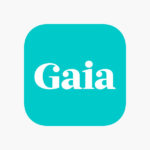 “If we want to set out on the arduous search for the truth, we must all summon up the courage to leave the lines along which we have thought until now, and as the first step begin to doubt everything that we previously accepted as correct and true. “
“If we want to set out on the arduous search for the truth, we must all summon up the courage to leave the lines along which we have thought until now, and as the first step begin to doubt everything that we previously accepted as correct and true. “
—Erich von Daniken
With trailing 12-month sales of $40 million and a market cap of roughly $220 million, Gaia, based in Boulder, Colorado, is a leading provider of new age streaming video services. With over 500,000 subscribers to its monthly service, the company focuses on several genres, including yoga, seeking truth, transformation, and alternative healing, and thus occupies a unique niche within the streaming content landscape. The company boasts over 8,000 titles, 90 percent of which are unique to Gaia. Subscribers reside in 185 countries, with about 30 percent of revenue coming from international markets.
Though the majority of viewership is focused on several thousand titles in its library, no single title accounts for more than one percent of viewership. The company continues to create new video content in its Colorado studios.
Gaia was founded as Gaiam in 1988 in Boulder, Colorado by entrepreneur Jirka Rysavy, who was also a founder of Corporate Express, and Crystal Market, a natural foods market later acquired by Wild Oats Market. Gaiam began with a mission to provide products to those in pursuit of a healthy lifestyle and a respect for the environment, based on ecological sustainability, consistent with the corporate ethos of other Boulder-based companies, such as Wild Oats Market, and Celestial Seasonings. Gaiam, the company’s original name, came about as the fusion of Gaia, the ancient Greek deity, who represented the idea of the earth as a living system, and “I am,” meant to evoke a sense of connectedness with the planet.
2016 was a transformational year for Gaiam. In May, the company sold its equity interest in Natural Habitat, its eco-travel subsidiary, for $13 million in cash. Later that month it announced the sale of its Gaiam Brand business to Sequential Brands Group (NASDAQ: SQBG) for $167 million. The sale included the company’s branded yoga, fitness and wellness consumer products, and content, with the exclusion of the streaming rights to that content. The sale of its branded products business allowed Gaiam to focus exclusively on streaming video services and DVD distribution, and the company changed its name to Gaia. The new company utilized $77 million to repurchase 9.6 million Class A common stock shares, and 840,000 vested stock options at a fixed price of $7.75 per share in a tender offer completed in July of 2016. This transaction reduced its shares outstanding from 24.6 million to 15 million. By the end of 2016, Gaia had over 200,000 subscribers to its internet video service.
In March of 2018, Gaia executed a secondary stock offering, and sold 2.3 million Class A common shares at $15 per share. In connection with the offering, certain directors and officers of the company agreed to purchase roughly 135,000 shares. Gaia’s advisor for the transaction was Roth Capital Partners. The offering was led by B. Riley FBR, Lake Street Capital Markets, and Dougherty & Company. Gaia used a portion of the $32 million in net proceeds to pay down $12.5 million in debt. In early September of 2018, Gaia announced that it was about to cross the 500,000 subscriber mark, which compared to 311,000 subscribers in the prior year, and marked a major milestone in its quest to achieve one million subscribers by the end of 2019.
Gaia has taken an aggressive approach to marketing by investing 90 to 120 percent of streaming revenue in the last few quarters in customer acquisition as part of its goal to sign up one million subscribers by the end of next year. Year to date revenue has grown an impressive 58 percent, though its operating losses have widened to $25 million, from $19 million over the same period last year. The company currently intends to utilize most of the $31 million in cash on its balance sheet, along with a secured line of credit of $12 million to aggressively target new customers over the course of the coming year, with the intent of letting its cash balance fall to between $2 and $5 million, before it begins to generate profit on a consistent basis.
Gaia recently launched a new channel, focused on alternative healing, drawing upon roughly 1,000 titles from its existing library, in an effort to more effectively merchandise the content, and attract new subscribers with interest in this segment. The company also intends to launch a new premium service that will be priced in the vicinity of $299 per year, which will include access to live events.
The New York Times: Failing or Thriving?
 “Were it left to me to decide whether we should have a government without newspapers or newspapers without a government, I should not hesitate a moment to prefer the latter.”
“Were it left to me to decide whether we should have a government without newspapers or newspapers without a government, I should not hesitate a moment to prefer the latter.”
—Thomas Jefferson to Edward Carrington, 1787
With over four million paid subscribers to its news, website content, and daily newspaper, The New York Times Company (NYSE: NYT) has been a trusted source of news coverage since its inception more than 165 years ago. Launched in 1851 as the New-York Daily Times by Henry Jarvis Raymond and George Jones, The Times gained momentum as a trusted news source a decade later, when it expanded its six day per week publication to seven days, in order to cover breaking news relating to The Civil War. The Times further burnished its credentials as a source of incisive coverage of the events of the day when it exposed the corrupt practices of William M. “Boss” Tweed, a New York City leader of the Democratic Party political machine.
Rescued from financial ruin by the Ochs-Sulzberger family in 1896, the paper enhanced its reputation for quality journalism. Under the slogan “All the News That’s Fit to Print” which first appeared alongside the paper’s moniker in 1897, The Times began to distance itself from many of its more sensationalistic competitors, who emphasized the more lurid stories of the day in their reportage. The Times’ focus on quality investigative journalism has enabled it to win over 122 Pulitzer Prizes—more than any other news organization—including 61 Pulitzer Prizes in the last 25 years.
The New York Times has also developed a reputation for leadership in maintaining the rights of a free press to publish articles of interest to the public at large, despite objection from the subjects of its coverage. In some cases, the company has argued its position before the US Supreme court, as it did in New York Times Co. v Sullivan in 1964, when the court established the “actual malice” standard that requires public officials or public figures acting as plaintiffs against a news organization to establish that statements about them were published in reckless disregard of their truth or falsity in order to meet the threshold of defamatory or libelous intent.
As an independent newspaper, The New York Times has had to balance its role as a responsible purveyor of news, with its responsibility to protect sensitive national security information, sometimes at the behest of the US government. Over the years the newspaper has either delayed or withheld the publication of articles, often in consultation with government officials over fears of placing lives at risk. However, the paper has at times made the decision to publish articles that it believed to be in the public interest, despite objections from the government.
In 1971, The New York Times, along with the Washington Post played a key role in publishing portions of the Pentagon Papers, a classified US Department of Defense history of the government’s conduct in the Vietnam War. When The New York Times began to print excerpts from the report, the Nixon administration sought to restrain publication on the grounds that material leaked interfered with government’s ability to conduct the war, and enter into negotiations for peace. When the newspapers refused to comply with the government’s request, the Nixon White House obtained a federal court injunction to cease publication, and called for the source of the leaks, Daniel Ellsberg, to be prosecuted under the Espionage Act of 1917. Simultaneous appeals of the government’s actions by the newspapers wound their way up the judicial chain to the US Supreme Court, which decided in a 6-3 decision in 1971 that the injunctions on the newspapers were unconstitutional prior restraints, and crucially, that the executive branch had not met the burden of proof required to enforce its order.
In addition to its award-winning news coverage over many years, the newspaper has been cited in numerous studies for the quality of its work. As a result of its reputation for quality, independent investigative journalism, The Times has become the newspaper of record for national and global events, as archived copies of the newspaper housed in libraries throughout the world are drawn upon by researchers, students, and general readers.
For more on Battle Road’s current perspective on The New York Times, please contact info@battleroad.com
Akamai Technologies: A Growing Force in Cyber-Security
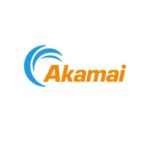 Founded twenty years ago by MIT graduate student Daniel Lewin, and Dr. Tom Leighton, his applied mathematics professor, Akamai Technologies, based in Cambridge, MA specializes in internet content delivery, web performance, and cybersecurity software. With trailing twelve month revenue of $2.6 billion, and a market cap of roughly $13 billion, the company serves more than 60 percent of the Fortune 500, each of the top 15 US and Canadian retailers, all of the top 20 global ecommerce companies, the 50 largest global carriers, 47 of the top 50 American television networks, 21 of the top 25 global gaming companies, 17 of the top 20 global social media platforms, the largest 25 banks in the US, the 10 largest global auto manufacturers, and all branches of the US military. More than 500 customers spend more than $1 million annually with Akamai, and no customer accounts for more than four percent of sales.
Founded twenty years ago by MIT graduate student Daniel Lewin, and Dr. Tom Leighton, his applied mathematics professor, Akamai Technologies, based in Cambridge, MA specializes in internet content delivery, web performance, and cybersecurity software. With trailing twelve month revenue of $2.6 billion, and a market cap of roughly $13 billion, the company serves more than 60 percent of the Fortune 500, each of the top 15 US and Canadian retailers, all of the top 20 global ecommerce companies, the 50 largest global carriers, 47 of the top 50 American television networks, 21 of the top 25 global gaming companies, 17 of the top 20 global social media platforms, the largest 25 banks in the US, the 10 largest global auto manufacturers, and all branches of the US military. More than 500 customers spend more than $1 million annually with Akamai, and no customer accounts for more than four percent of sales.
Akamai’s software and services are delivered over a proprietary global network that has grown to exceed 240,000 servers embedded in 1,700 networks in 3,900 locations in 133 countries. The distributed nature of this global network with servers located locally at the “edge” of the internet ensures that content is delivered quickly and efficiently.
Versus four years ago, when cloud security comprised just $50 million in annual revenue, the Cambridge-based company has developed a growing cloud security business, which contributed $486 million in revenue last year, or 20 percent of total sales. At present growth rates, even in the absence of acquisitions, cyber security could become the company’s largest business within four years.
Increasingly sophisticated cyber attacks funded by governments, organized crime, and political activists place banks, global media, and governments and their constituents at increased risk of fraud, identity theft, loss of reputation, and loss of revenue. In response, Akamai has developed a differentiated series of cloud software services designed to protect against such attacks. The basic premise behind its approach, and the key demand driver for its services is that it is much easier to attack a corporate network, than to protect it, as even a single hole can become the stalking horse for massive bot armies that can bring a network to its knees.
Through its early work with Kona Site Defender, which protects websites and APIs against cyber attacks, Akamai developed a core competence in protecting against Distributed Denial of Service (DDoS) attacks against data center software assets. Such attacks involve the high-jacking of a large number of computer servers to overwhelm a target website or data center with malicious traffic. DDoS attacks, launched by political activists, cyber criminals, and hackers seeking notoriety have become the bane of large bank and ecommerce companies in particular. Akamai has since developed and acquired new capabilities to protect against DDoS attacks, and added products to protect against web application layer attacks, as well as solutions to block and mitigate malware, ransomware, and phishing attacks.
Akamai has also had success with Bot Manager, a product launched in 2016, which provides insight into the amount of bot traffic accessing a website, as well as prevention of price and content scraping, which is particularly worrisome to ecommerce companies. Utilizing Bot Manager, the company reports that a single bank achieved a reduction in account takeovers from 8,000 per month to just one or two per month. Bot Manager has thus helped save the bank tens of millions of dollars in direct fraud each year.
From its roots in content delivery and web performance, Akamai has been able to leverage its massive, distributed global network to delivery increasingly sophisticated lines of defense against cyber security attacks. No longer a noise level item in its income statement, cloud security now exceeds 20 percent of sales, and is growing rapidly. As IT security professionals increasingly embrace cloud solutions for perimeter defense, Akamai is well-positioned for growth.
Fitbit: Struggling to Stay in Shape
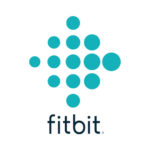 With trailing 12-month sales of $1.6 billion, a market cap of $1.8 billion, $658 million in cash and zero bank debt, Fitbit, founded in 2007, and based in San Francisco, CA, is the largest provider of internet-connected health and fitness tracking devices. The company addresses a multi-billion dollar annual revenue opportunity comprised of health-conscious consumers who wish to track daily progress toward achieving weight loss and fitness goals. The company offers a broad product line, consisting of six activity trackers that range in price from $60 to $150 at retail, and two smartwatches, priced at $200 and $300, respectively. Fitness trackers account for roughly 70 percent of revenue currently, with smartwatches accounting for most of the remainder.
With trailing 12-month sales of $1.6 billion, a market cap of $1.8 billion, $658 million in cash and zero bank debt, Fitbit, founded in 2007, and based in San Francisco, CA, is the largest provider of internet-connected health and fitness tracking devices. The company addresses a multi-billion dollar annual revenue opportunity comprised of health-conscious consumers who wish to track daily progress toward achieving weight loss and fitness goals. The company offers a broad product line, consisting of six activity trackers that range in price from $60 to $150 at retail, and two smartwatches, priced at $200 and $300, respectively. Fitness trackers account for roughly 70 percent of revenue currently, with smartwatches accounting for most of the remainder.
In the fourth quarter of 2016, Fitbit hit a brick wall amid execution challenges related to manufacturing and channel management. Missteps included being slow to address excess channel inventory, as well as operational challenges, including a poorly-timed headcount increase of 80 percent during 2016. In response to changing market conditions, management took corrective action at the start of 2017, including a six percent workforce reduction, and streamlining the number of devices offered. In addition, the company was reorganized around fitness devices and enterprise health.
While Fitbit continues to maintain a strong presence in the activity tracking market, the success of the Apple Watch, a higher end, more full-featured family of devices has redefined the market, and, to some degree, siphoned off demand for activity trackers. Fitbit has responded to this changing market dynamic through the introduction of two smartwatches, the Ionic, launched in late 2017, and more recently, the Versa. However, the company continues to face price competition in its core fitness tracker market, and has experienced soft demand for these products in the US in particular, its largest market. As a result, greater emphasis will be placed on smartwatches for future growth.
While smartwatches carry higher ASPs, they also feature lower gross margins than fitness trackers. Near term, the company is unlikely to improve by much its current gross margin, which hovers in the low 40 percent range. In the meantime, the company’s current cost structure prevents it from achieving break-even. While Fitbit maintains a strong cash position of more than $658 million and no debt, it has steadfastly refused to implement a share buy-back, preferring instead to utilize cash for leasehold improvements, along with tuck-in acquisitions, most recently geared to expanding its limited position in health-related services.
The firm’s reliance on the retail channel, including mass merchants and specialty retailers remains a source of concern, given the mixed signals coming from the retail industry, as well as a policy of recognizing revenue based on sell-in, rather than sell-through. As a final investor caveat, we note its dual class share structure guarantees the founders perpetual control of the voting rights of the company, which keeps it insulated from shareholder input. Overall, we see Fitbit as a company with longer term appeal, if it can manage to slim down for future success.



